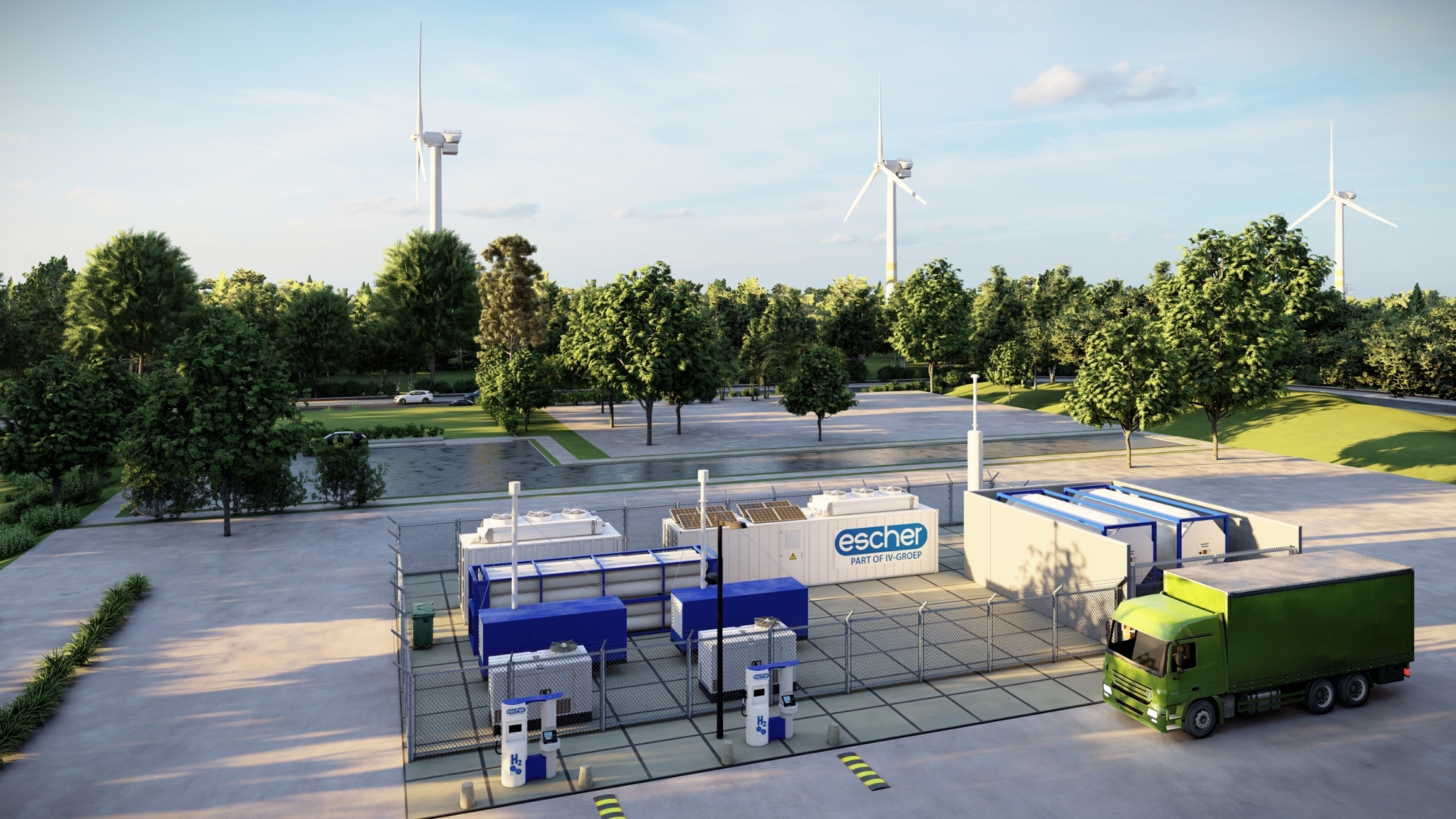
Green hydrogen has been identified as ‘the’ alternative to fossil fuels. It can be produced almost anywhere in the world as long as there is a source of renewable energy (wind, solar, hydro etc.). In Western Europe, the Netherlands for example, there is unfortunately not enough renewable energy available to cover the entire demand. Importing hydrogen from all over the world is however very complex and has many disadvantages. Escher Process Modules – part of Iv-Groep – therefore developed a technology for the decentralized production of green hydrogen from ammonia, which serves as a hydrogen carrier.
The technology developed by Escher ‘cracks’ the ammonia converting the ammonia back into hydrogen and nitrogen, subsequently the hydrogen and nitrogen are separated from each other to produce hydrogen. The produces hydrogen Is 99.999% pure, which makes it suitable fuel for fuel cells. Compared to traditional production of hydrogen through electrolysis, this process requires only one twelfth of the required energy. Approximately 80% of the atmosphere is already made up out of nitrogen, hence the produced nitrogen from the process can be safely emitted without negative climate effects. When using renewable energy for the cracking process, the production can even be made entirely green.
Less transport needed
Green hydrogen projects are already being developed on centralized locations where big off takers like the heavy industry can directly use the produced green hydrogen. However, in order to make a significant difference within the energy transition, it is vital that small and medium-sized users can also switch to green hydrogen in the short term. Currently the only way of reaching these users is by transporting the hydrogen as a compressed gas, which is highly inefficient and would require lots of transportation. Local production of hydrogen from ammonia is the solution to reach those users. As a result, there is no need for the less efficient transport of hydrogen by tube trailer trucks. Instead, the hydrogen is produced from ammonia where it is required, close to the end user.
Involving the whole world
We see a great future for local green hydrogen production: a game changer in the energy transition and an opportunity for countries where huge amounts of solar energy can be generated (for example in regions as Africa, Asia, South America and the Middle East). Many of the countries that currently supply our energy in the form of oil and gas are well positioned to play a role in the production of renewable energy, but this time also less developed countries have a role to play in this energy transition. “That aspect appeals us”, Martijn In der Maur, Director of Escher, states. “In any case, it is certain that we are dependent on other countries and areas if we want to switch completely to green energy. It is utopian to think that we can do it alone. We all need to cooperate.”
Commercial Manager Maarten Brandenburg: “The whole trading platform has yet to emerge. For example a barrel of crude oil is traded on the open market at spot prices. This is necessary for ammonia as well, that would make it interesting for everyone. The good news is that the first signs are already there.”
Escher Process Modules
Escher is an experienced and a leading provider of process solutions since 1925. They engineer, fabricate, package and supply Gas Treatment Systems, Combustion Systems and Process Vessels.
Escher is part of Iv-Groep B.V.